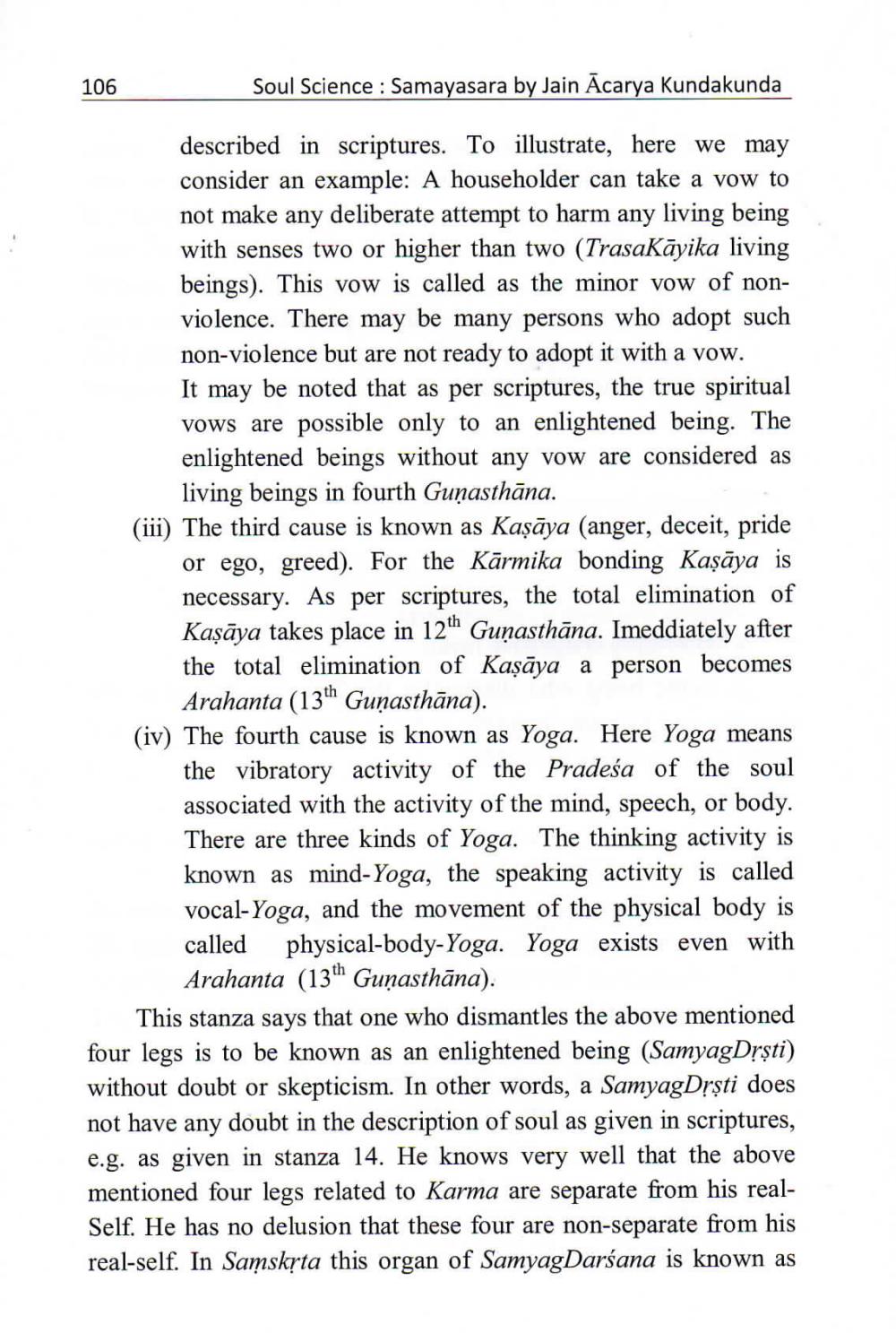________________
106
Soul Science : Samayasara by Jain Acarya Kundakunda
described in scriptures. To illustrate, here we may consider an example: A householder can take a vow to not make any deliberate attempt to harm any living being with senses two or higher than two (TrasaKāyika living beings). This vow is called as the minor vow of nonviolence. There may be many persons who adopt such non-violence but are not ready to adopt it with a vow. It may be noted that as per scriptures, the true spiritual vows are possible only to an enlightened being. The enlightened beings without any vow are considered as
living beings in fourth Guņasthāna. (iii) The third cause is known as Kaņāya (anger, deceit, pride
or ego, greed). For the Kārmika bonding Kaṣāya is necessary. As per scriptures, the total elimination of Kaşāya takes place in 12th Guñasthāna. Imeddiately after the total elimination of Kaşāya a person becomes
Arahanta (13th Guņasthāna). (iv) The fourth cause is known as Yoga. Here Yoga means
the vibratory activity of the Pradeśa of the soul associated with the activity of the mind, speech, or body. There are three kinds of Yoga. The thinking activity is known as mind-Yoga, the speaking activity is called vocal-Yoga, and the movement of the physical body is called physical-body-Yoga. Yoga exists even with
Arahanta (13th Guņasthāna). This stanza says that one who dismantles the above mentioned four legs is to be known as an enlightened being (SamyagDrști) without doubt or skepticism. In other words, a SamyagDrști does not have any doubt in the description of soul as given in scriptures, e.g. as given in stanza 14. He knows very well that the above mentioned four legs related to Karma are separate from his realSelf. He has no delusion that these four are non-separate from his real-self. In Samsksta this organ of SamyagDarśana is known as




